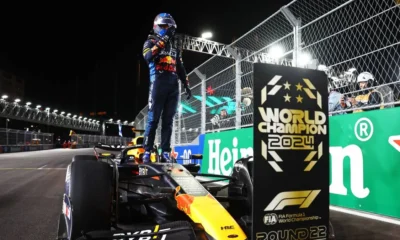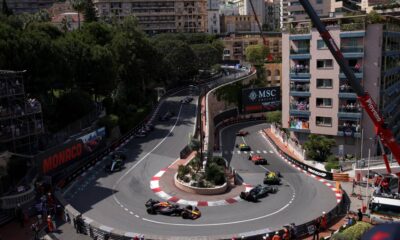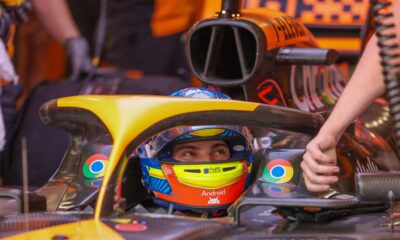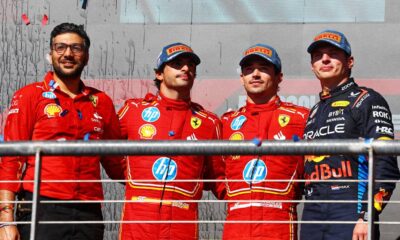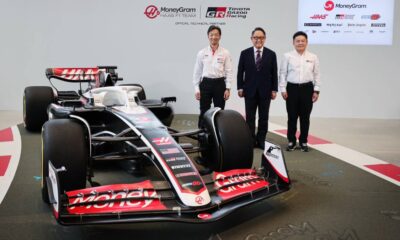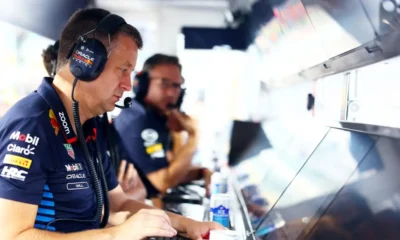More
An absolute legend and the best racer of all time! Ladies and gentlemen – Juan Manuel Fangio
An absolute legend and one of the best racers of all time. Lewis Hamilton called Juan Manuel Fangio the godfather of Formula One. However, he has had his share of negative moments and a big crash in his storied career! Which stable did Fangio never get on with?
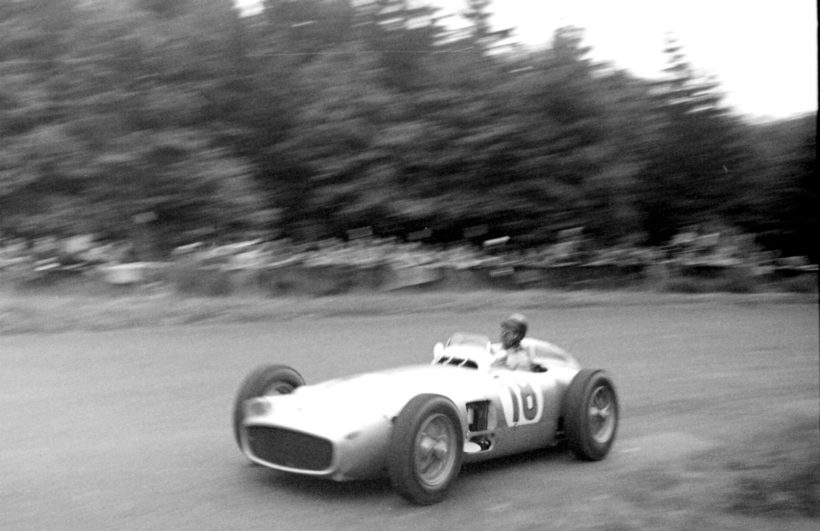
An absolute legend and one of the best racers of all time. Lewis Hamilton called Juan Manuel Fangio the godfather of Formula One. However, he has had his share of negative moments and two major crashes in his storied career! Which stable did Fangio never get on with?
From a young age, he wanted to be a winner, he wanted to be the best. And that, as we all know today, he succeeded.
He started racing in the 1940s in the Turismo Carretera. The paradox is that the drivers had to carry all the spare parts, everything that could go wrong during a long race, in their cars.
Around 150 drivers regularly took part in these tough tests, but only twenty of them saw the finish line. Fangio was most famous for the race from Buenos Aires to Lima, which lasted several days.
He encountered several technical problems along the way and was among the last to start every leg except the last. The race was also challenging because he had to run at 110% all the time to pass the 40 or so riders ahead of him. This, of course, entails much more tyre degradation.
However, the Argentine racer managed to win three championships, in 1940, 1941 and 1947. His performance was rewarded by being sent to race in Europe.
Before that, in 1948, he competed in what was then described as the world’s toughest race. And it was here that he suffered his most serious accident – in the South American Grand Prix. The race started in Buenos Aires and went all the way to Caracas.
Fangio and his Maserati literally flew off the track at high speed, throwing his co-driver out of position, who subsequently died.
Fangio had already signed with the Formula 1 team in its historic first season. His qualities went unnoticed, with the Argentine driver joining the Alfa Romeo team for this season.
Fangio was also a kind, humble and great person, as evidenced by the very signing of his contract with the Italian team. When negotiating the terms, he told the team management to write whatever they wanted in the “amount” box. He was happy that he didn’t have to put any of his own money into racing, only himself.
But the fact is that there is absolutely no comparison between the past and today. And not just because of the financial conditions or the commercialism. “Today it’s harder to treat the whole team as a family, it’s completely different.
If you look at today’s conditions, you have around 1,500 people in the team, whereas it used to be a small ‘family business’ of 20 to 30 employees,” Nico Rosberg told Netflix and their documentary (Juan Manuel Fangio, Life at Full Speed – ed.).
He also added that previously the drivers were much more connected with their team. Today, a driver has race engineers to tell him what to do and how to do it.
Two-time world champion Mikka Häkkinen added his insight to the comparison of completely different eras. “The biggest difference between these eras is comfort. It’s how you feel in the car.
Before, cars weren’t comfortable, it was all about going fast. Driving a car from the 1950s was a different science. It’s incredible how much effort they had to put into driving.”
Fangio’s greatest strength was his connection with his team. He was also a great listener and cared about what others thought of him. The film also features archive interviews after his career ended.
In them, Fangio revealed that he always asked his mechanics what the car’s limits were and made sure he didn’t exceed them. He also never considered anyone an enemy. He only knew the rivalry on the track, never off the track.
But in his first year in Formula One, he didn’t win the world championship. The first ever champion was Nino Farina, who was also Fangio’s teammate. Their Alfa Romeo was at its peak.
But by 1951, Fangio had already succeeded. He won the championship by six points over Alberto Ascari, who was racing in Ferrari colours. It was the Italian Maranello stable that was Alfa Romeo’s biggest rival in those days. Ascari also dominated the next two editions.
It should be noted – in 1952 Alfa Romeo and Fangio did not enter the World Championship. Alfa did not build a new car for the new season, so the famous Argentine legend was forced to take a year’s break from F1.
Fangio filled the gap with races at the city circuits of Albi (France) and Northern Ireland. And it was after this race that he quickly travelled to Italy, where he pledged his participation to the Maserati team. However, he missed his plane and didn’t arrive at the Monza circuit until half an hour before the start of the race.
And it took its toll on him too – on the second lap, Fangio suffered a serious accident when he went off the track and steered the car straight into the trees. He was taken to hospital in Milan for multiple injuries. His convalescence then took place in Argentina.
In one of the archive interviews mentioned above, he said that both accidents happened to him for one reason. And that reason was physical exhaustion. He said no one should ever drive tired.
He returned to Formula One in 1953, fully recovered, and decided to stay with Maserati. But he lost seven points to Ascari in the final championship standings. For 1954 and 1955 he decided to join Mercedes and it’s safe to say that his involvement with the Silver Arrows worked out perfectly.
Fangio completely dominated the 1954 season, his lead at the end of the championship was 16.9 points! For the time, that was a decent amount. He completely obliterated any competition. Mercedes-Benz clearly dominated the following season. The famous Argentine celebrated another triumph, again by 17 points. He was followed by his teammate, Stirling Moss.
But something happened that year that would shake the world of motorsport. The year was 1955 and the famous 24 Hours of Le Mans was held. And that’s when the horrific accident that killed 82 people happened.
It happened before the drivers were changed. Mike Hawthorn braked hard just before entering pit lane. The driver behind him, Lance Macklin, jerked the wheel to the left. At the same time, Pierre Levegh was also passing, and he ran into Macklin’s tyres. This catapulted him off the track and straight into the spectators.
This is one of the worst crashes in motorsport history. Mercedes also withdrew from motor racing for a time.
“Sixty-five drivers have died in Formula One in our era! 65! If various safety measures hadn’t been put in place, insurance companies and investors would have said enough. “Formula One could have ended completely then,” Jackie Stewart told Netflix.
It’s worth noting – once upon a time, despite almost zero safety, pilots were reaching speeds of 300 km/h. You could say that drivers in those days were putting their own lives on the line. Stewart went on to say that this is something that today’s F1 drivers (thankfully) don’t know and new safety features are being introduced all the time.
For 1956, Fangio joined Ferrari. Yes, he managed to win the world championship that season too. But it wouldn’t have been if Peter Collins hadn’t offered him his car in the pits. To be clear, Fangio’s Ferrari broke down in the last race, specifically a crack in the steering column.
Thanks to Collins, his stablemate, who at the time also still had a chance of overall triumph, Fangio finished second behind Moss and was able to celebrate his fourth overall World Championship victory.
But he never really got on with the Italian team, he never really got on with them. Fangio was also distrustful and a pro. He was the one who told me how to set up the car, what to change and so on. But Ferrari didn’t like that about the pilots and they wanted to run that business themselves.
So after his contract ended he returned to Maserati, where he said he always felt best. In 1957, he won his fifth and final world championship with them.
Believing in fate, Fangio believed that recurring technical problems signalled the end of his career in the 1958 season. In fact, he didn’t even finish it, announcing his retirement after only two races. By this time, commerce had begun to enter Formula One, something that did not sit well with the famous legend either.
He died on 17 July 1995 at the venerable age of 84. And we have to say, he left a significant mark! A five-time world champion, and as for his record?
He entered 51 races in which he recorded 24 victories, stood on the podium 35 times, started from pole position twenty-nine times and set the fastest lap twenty-three times.
“Every child needs someone to inspire them, a role model. Fangio inspired millions of people and made a lot of people want to race, ” Fernando Alonso said in a Netflix documentary.
Another legendary racer, Alain Prost, also made a statement. “He was the personification of Formula 1, Mr. Driver. Wherever he went, he was considered a god. We never saw another driver like him, ever.”
He has not been surpassed in these percentage statistics to this day, as a study undertaken by the University of Sheffield proved. They used a multilevel model to distinguish the different sources and variability that lead to winning in Formula 1. The main indicator was how much influence the driver himself had on the car over time.
The aim was also to find out how much of what has happened in Formula 1 since 1950 was due to the car. Each era needed to add what it was currently lacking, races in the rain also spoke to the results of the study as the team has less control over the entire race. In the rain, the team cannot predict what will happen on the race track.
The winner of this trial was Fangio, who achieved what is probably an unattainable feat. Yes, some have already surpassed him in the number of titles, but to be the best and to win throughout his career, and in four different teams – that is unrepeatable today.
Sources

